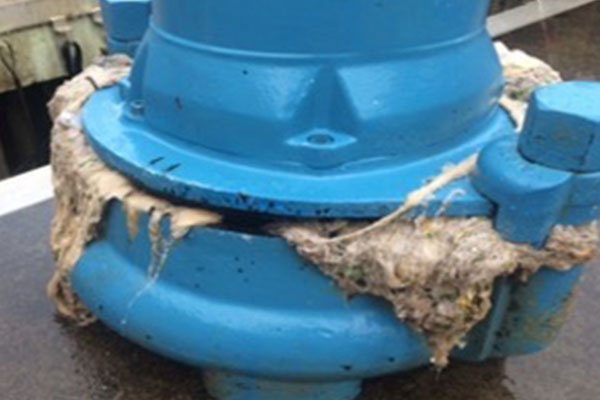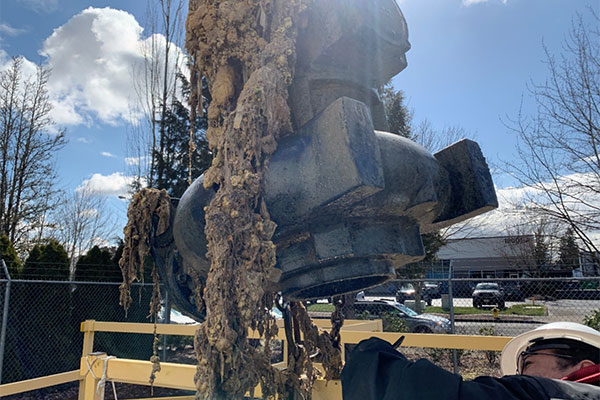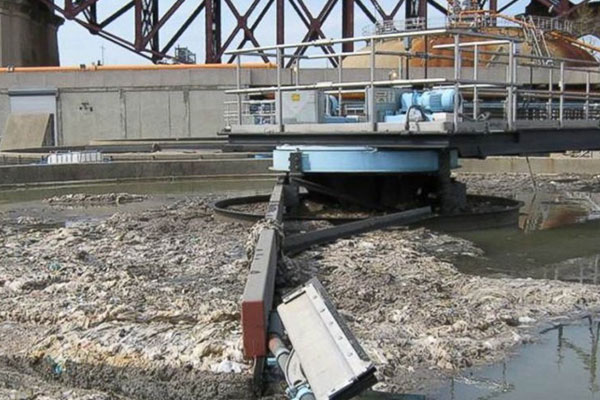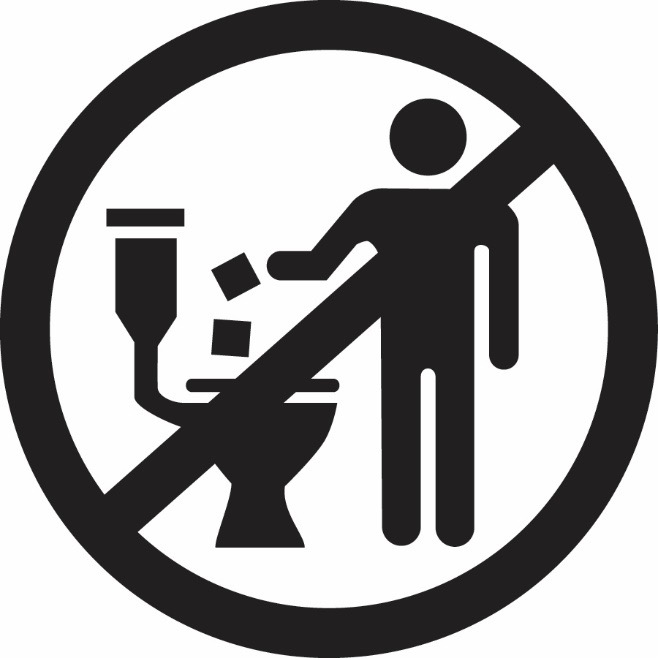Wet wipes first appeared on shelves in the early 2000s and are now marketed for all kinds of purposes: household cleaning, personal care, baby wipes, and more recently as a replacement for toilet paper. These products are often marketed as "flushable," but while they may make it down your toilet drain, they do not break down like normal toilet paper. They can remain intact and cause expensive blockages, backups, and overflows.

Wipes clogging a pump in a neighborhood in Vancouver, WA. Photo courtesy of the Association of Clean Water Agencies (ACWA).

Wipes tangled around a pump. Photo courtesy of City of Vancouver, WA.

Wipes clogging a wastewater treatment clarifier. These clarifiers are for sedimentation of particulates to separate the sludge from the water – there should be no visible debris on the surface. Photo courtesy of City of Vancouver, WA.
Is it really flushable?
Wipe manufacturers and water treatment facilities continue to disagree on what is a “flushable” item, there is no penalty for noncompliance with industry flushability standards, and testing is technically not required.
Wipes are some of the most common debris found in sewers. Two 1-day collection studies in New York and Florida found only about 1% of sewer debris to be flushable wipes, but respectively 29.1% and 37% to be nonflushable baby wipes.
Multiple studies have found that wipes marketed as flushable do not disintegrate when mixed, blended, or otherwise agitated in water:
- A Vancouver, Washington study found that only one brand of flushable wipe was able to disintegrate in the sewer.
- A 2020 study found that out of 101 flushable and non-flushable products, all products aside from toilet paper failed disintegration testing.
- A 2019 analysis of 58 wipes on the market concluded that there does not appear to be a clear technical difference between "flushable" and nonflushable wipes.
- Many nonflushable wipes are inadequately labelled as nonflushable, if labelled at all, adding to customer confusion.
A small clump of wipes caught on a sampler in a manhole here in Albany. Tangled wipes must be removed by hand.
Damage you pay for
Any wipes can clog pipes, leading to sewer blockages, backups, and overflows. Wipes can also damage pumps and other wastewater treatment equipment. The 2020 National Association of Clean Water Agencies report found wipes created a $440 million/year operational cost for wastewater utilities. Even if you are fortunate enough not to experience and pay for a sewage backup or blockage on your own property, your tax dollars are still paying for the cost of backups and other damage created by wipes.
Not sure if it's flushable? Throw it in the trash instead.
Look for the label

In an effort to promote proper disposal of nonflushable wipes and prevent expensive damage to wastewater systems, Washington, Oregon, California, and Illinois have all adopted laws requiring clear "Do Not Flush" labeling on all nonflushable products. The Break Free from Plastic Pollution Act, reintroduced in 2021 in Congress, contains a national "Do Not Flush" labelling provision for wipes. These efforts can help, but flushable wipes remain an issue.





